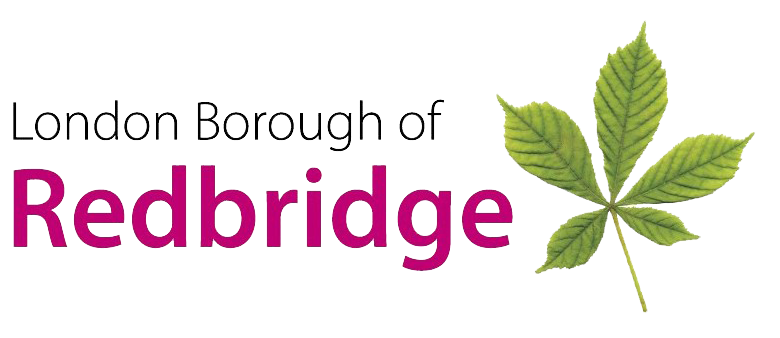Barleymont Group of Day Nurseries, Preschool, Afterschool and Holiday Club
![]()
TEL : 02085038662 / 07740110215 |

Barley Lane Preschool & Afterschool Centre > Curriculum > Child Development / EYFS Curriculum / Montessori Curriculum / EYFS and Montessori
Montessori Curriculum
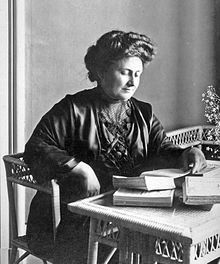 Maria Montessori (1870 - 1952)
Maria Montessori (1870 - 1952)
Montessori was one of the most important early years educators of the 20th century, the innovator of classroom practices and ideas which have had a profound influence on the education of young children the world over.
She was the first woman to graduate from the University of Rome medical preschool and became interested in education through her work as a doctor, treating what today are known as children with special needs. When she went on to establish preschools for the disadvantaged children of working parents in Rome she approached their education as a scientist, using the classroom as her laboratory for observing children and finding ways to help them to achieve their full potential.
It soon became apparent that Dr Montessori had developed a highly effective method of teaching which could be used with great success with each and every child. She began to travel the world, establishing preschools, lecturing about her discoveries and writing many articles right up to her death in Holland in 1952 at the age of 82. She was a true pioneer of child-centred education. Her innovative classroom practices and ideas have had a profound influence on the education of young children all over the world.
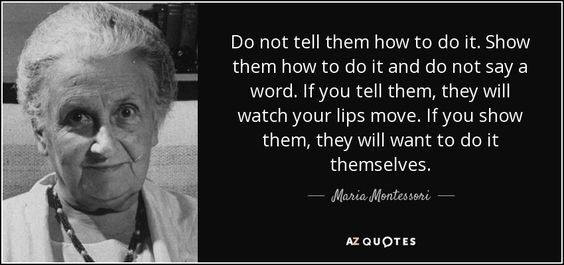 Montessori saw that children learn best by doing and that happy self-motivated learners form positive images of themselves as confident, successful people. She created specially designed resources to foster independence and a love for learning from an early age.
Montessori saw that children learn best by doing and that happy self-motivated learners form positive images of themselves as confident, successful people. She created specially designed resources to foster independence and a love for learning from an early age.
The Montessori approach is holistic and aims to develop the whole child. Fundamental to the approach is the belief that a child’s early years from birth to six are the period when they have the greatest capacity to learn.
Montessori left a legacy through her work that combines a philosophy of freedom and self-development for children with a practical approach.
The Montessori Approach how adults can help in their child’s development
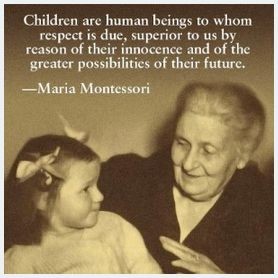 Respect and Independence
Respect and Independence
Children who spend their time in Montessori preschools learn to think of the world as an exciting place full of possibilities. They begin to know themselves as powerful people who can do all sorts of things for themselves. They think of adults as helpful friends who are always there if needed, but who never try to overly interfere or control their activities. This is because Montessori teachers really respect young children as individuals and treat them as dynamic natural learners.
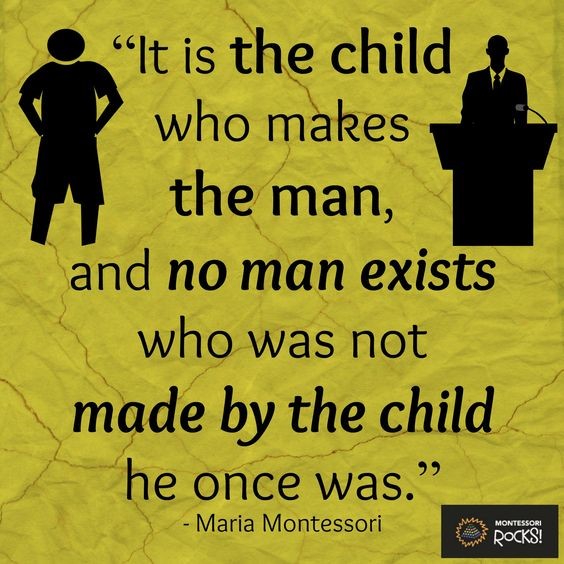 Nurturing creative curiosity
Nurturing creative curiosity
Your Montessori child will come home buzzing with ideas about what has gone on earlier in the day – from cookery projects, to learning about the life-cycle of butterflies, to the joy of discovering the skills of counting and writing. They will also buzz with the expectations of tomorrow.
It is really helpful, therefore, if parents can provide home environments that support this burgeoning confidence and creative curiosity. Your child needs you to slow down to his or her pace, to spend time sharing the things that he or she is excited about or interested in. Depending on the projects they are studying, many Montessori children become incredibly knowledgeable about such things as the different types of animals, the shapes of leaves or the names of geometric shapes.
Order and aesthetic sense
At preschool, Montessori children can access all the things they need without the help of adults. They may want to draw, cut, stick, count, write, make books, build towers or read. At preschool they learn that everything can be found in its own place and that it helps others if things get put back again in the same place. So Montessori children tend to be tidy and thoughtful about the needs of others.
If you can provide the same thing at home it will help your child to maintain the same level of consideration and independence. Special cupboards and shelves, all easily accessible, and beautiful materials and activities, all carefully laid out in boxes and trays, help the child feel that his or her work really matters. And if you ask your child’s teachers they will let you know what things your child is particularly interested in at the time. One of the most important things we can do for children is to follow their interests – to really know what they are excited about and to provide as much support and further activities as possible for them to explore and understand.
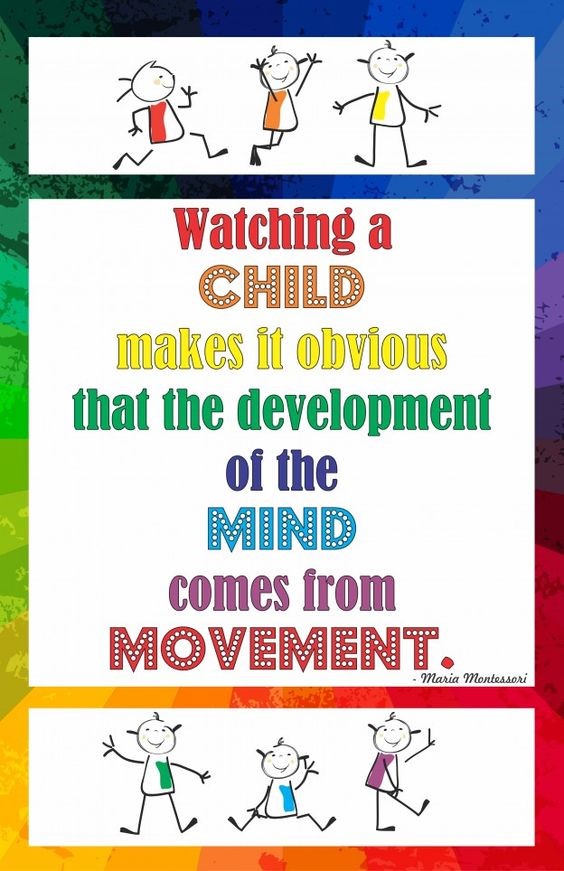 Every child is Special
Every child is Special
We live in a world that is full of pressures and external expectations. The early years of life are recognised as the very foundation upon which everything else is built. Each child is full of natural curiosity and the desire to learn so needs only to be set free within the right environment. This way of learning is characterised by a concentration and passion that is rarely ever exhibited in adult life. Montessori practitioners think this is the most important quality that we can preserve in our children.
But all too often this precious natural resource is threatened by pressures from outside: pressures to learn all their numbers faster than anyone else, pressures to be able to write their name, to colour shapes in accurately, to draw things that look acceptable, to count to ten, to sit still and wait to be told what to do. And pressure on boys to do all the things that girls do, even though we know that boys and girls are very different in their learning processes.
Whereas pressure from the inside is a good thing and makes us want to explore the world and learn more, pressure from the outside can also be very dangerous. It can interfere with all our natural processes and make us fearful rather than become the wonderful risk-takers we naturally are. It can tell us that we are only valued by our results and can make us see work as something that you only do if you have to, rather than something that excites us and makes us feel good. So we ask Montessori parents to really trust their children, to try to ignore such outside pressures, and to celebrate the very individual talents and abilities their children possess and enjoy.
Happy Child
The love of a child is like no other. At no other time in their lives will our children be so dependent on us getting it right. By choosing a preschool environment that is full of happy, sensitive, loving teachers and by providing a home environment that re-affirms to the child that he or she is an important person in the world, we allow each child to grow in trust and confidence and to become someone who cares about self, others and the larger world in which we live.
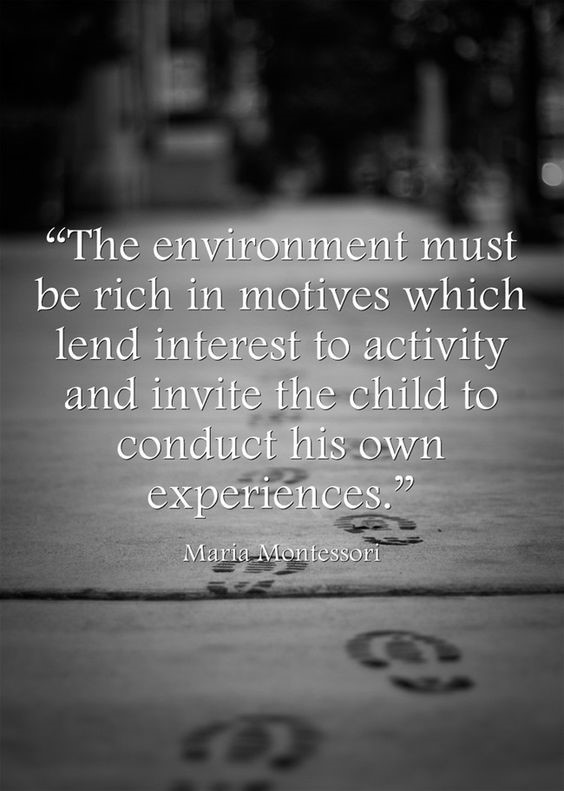 Prepared Environment
Prepared Environment
The layout of the classroom encourages exploration, communication and the development of relationships on all levels. Everything reflects a dedication to quality, beauty and to the children’s abilities to do things for themselves. Montessori saw that careful preparation of the environment is an essential ingredient for the successful development of children. She realised that the child relies completely on the environment for the sensorial impressions through which he or she gains a sense of the world in which he or she lives. Montessori therefore paid a great deal of attention to the way in which her preschool rooms were laid out. She wanted the classroom to be a happy, friendly place where children felt at home, where they knew where everything was and where they didn’t always have to rely on adults to help them.
Child-sized
Everything in a Montessori classroom is made to be easily accessible to the children. Montessori was the first educator to produce child-sized tables and chairs and to think about the fact that children need to have cupboards and shelves at their own height. She wanted the children to feel that the preschool room belonged to them rather than the teachers. She knew that order is very important to children and she therefore ensured that everything had its place and that all materials were kept as neatly as possible. She created materials that she saw the children were drawn to and she removed those items in which they showed no interest. She tried to ensure that the materials provided met the interests of the children. It was the children who led her development of the materials and the children who showed her how the environment should be prepared.
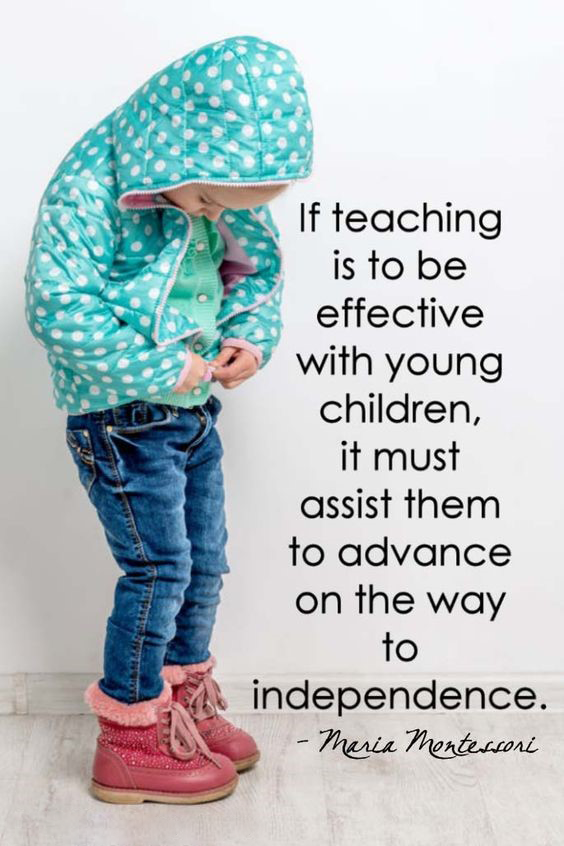 Practical Life skills
Practical Life skills
Montessori saw that very young children are frequently frustrated in their attempts to do things for themselves and that what they need is to have specific exercises, as closely linked to real life as possible, that allow them to master the tasks that they see going on around them in everyday life. She also saw that, unlike the adults in their lives, the children are not interested in achieving end results as quickly as possible, but are far more interested in the learning processes. As a result they will happily repeat exercises again and again until they feel satisfied. Practical life activities are therefore an important part of the Montessori environment. The young child is attracted to activities that he sees going on around him and that give him independence and control of his own life. She therefore introduced into her classrooms materials and exercises that allow children the maximum possible opportunity to learn how to both look after themselves and their environment. In the practical life area you will see things such as special frames to help children learn to do up and undo clothes, lots of spooning and pouring exercises, stirring, whisking and grating trays, cutting and threading activities and many other activities that children see going on around them at home. Practical life also includes helping children do other important tasks such as opening and closing doors, carrying trays and chairs, washing and drying hands, caring for books and blowing noses.
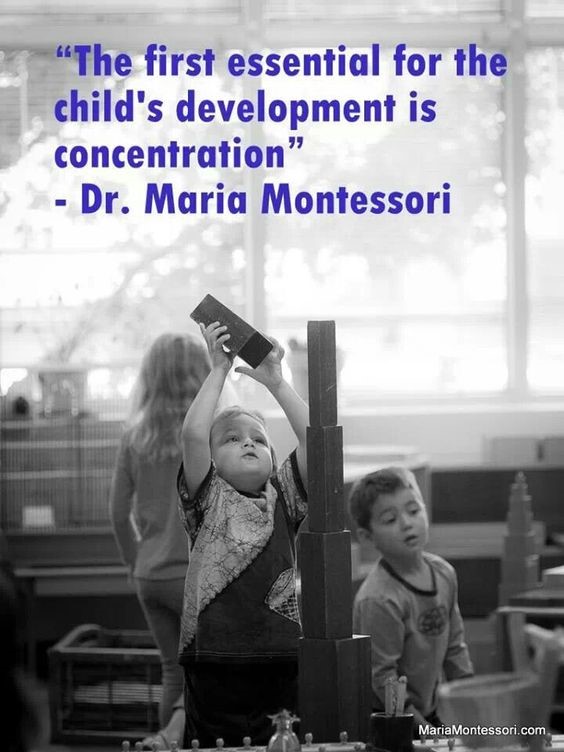 The sensorial materials
The sensorial materials
The need for order, exactness, self-correction and quiet reflection are all qualities that Montessori saw are needed for children to develop as they should. When she saw that children are particularly drawn to certain activities she concentrated on developing materials that would extend that interest. She carefully took each of the senses and thought how best she could help the children to clarify and expand their existing experiences. By isolating specific qualities in the materials and by grading each set in ever-refined series, she was able to give the children the ability to increasingly refine each of their senses. Many of the exercises in this area are also indirect preparations for later mathematics and language work as they enable the child to order, classify, put in a sequence and describe sensory impressions in relation to length, width, temperature, mass and colour.
Mathematics
Montessori believed that children have mathematical minds and she revolutionised the way in which mathematics is taught. She developed a wonderful set of materials, many of which have now been copied by educators throughout the world. The mathematical concept is presented firstly in a very concrete form followed by the abstract written version. The materials for mathematics introduce the concept of quantity and the symbols 1 through to 10. Then, using a variety of beads and symbol cards, the child becomes familiar with the numbers as a decimal system by means including concrete experiences with the operation of addition, subtraction, multiplication and division. These operations not only teach the child to calculate, but they provide a deep understanding of how numbers function.
Language
Montessori was a great believer in indirect preparation. By this, we mean that she found clever ways in which children can learn how to do things without even realising that that is what they are doing. For example, she created sets of metal insets that children use for drawing but that actually help form the fine motor skills for subsequent writing. Many of the practical life and sensorial exercises were designed with this in mind. When the child is ready, we begin to teach the phonetic sounds of the letters; then we move on to word building and recognition, and then book reading. She found that writing comes as part of the child s natural desire to express his or her new knowledge and nearly always precedes reading. One of the most wonderful times for children and teachers is when the children share the excitement of finding that they can put their thoughts down on paper and there is a subsequent explosion into emergent writing.
Cultural studies
Montessori saw that young children were full of curiosity and loved exploring new things for themselves. She also saw that they wanted to explore things in increasingly complex ways. When she experimented with what they might be interested in she was astonished just how much they wanted to know and how much they were able to remember. She therefore tried to find ways to help them understand the world beyond their own environments. She developed a wide range of beautiful materials that allowed the children to gain an appreciation of biology, geography, simple science and history. Each of these areas then allowed the children to explore and experiment with concepts such as metamorphosis, life cycles, land formations, the planets and time lines. As in all other areas of her work she was careful to let the children lead her in their interests and she was surprised to find that they very easily learnt not only the simple, but also the technical names of the new things that they were introduced to. In fact, Montessori children frequently astonish adults with their in-depth knowledge of the subjects they are studying.
Art and creativity
Montessori felt that it is very important for children to be allowed to express themselves freely. She was aware, however, that they are very often frustrated by the fine motor skills they need for such things as cutting and gluing. She therefore developed many indirect activities that help children develop the necessary abilities. The Montessori environment is full of opportunities to experiment with different and exciting materials. Whether involved in painting, singing, playing instruments or dancing, children are allowed to be individuals, free to express their feelings and emotions and free to enjoy the rich worlds of movement, sound, colour and sensation.
Imagination
Montessori preschools tend to offer the children activities that are based on real activities of the everyday world, because Montessori felt that very young children need such experiences. In a Montessori preschool, therefore, you are much more likely to see children actually washing, cleaning and cooking rather than pretending to do these activities.
Outdoors
Being outdoors is very important. Children develop gross motor skills as they climb, jump and swing, and also social skills as they take turns on equipment and play hide and seek. Montessori believed strongly that children should be in touch with the substance of their world, encouraging work with clay, gardening and growing activities, and even building little houses. Contrary to the belief that a sandpit has no place in a Montessori nursery, it has been suggested that Maria Montessori invented the idea.
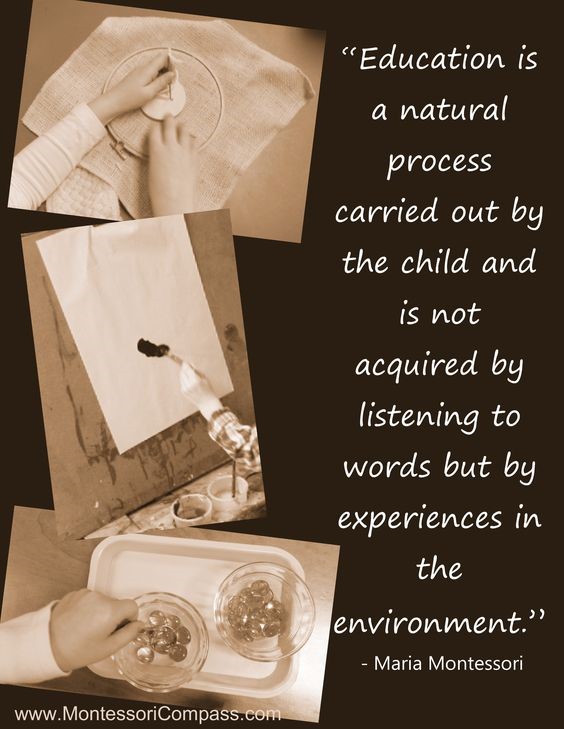 Social skills
Social skills
Children aren’t born with an innate knowledge of why we shake hands, or kiss, or rub noses depending on our culture and in the Montessori classroom they learn appropriate greetings. As they become aware of other cultures they are encouraged to celebrate differences and value them equally. During circle time children are shown how to move quietly and carefully around the classroom, push in chairs, wait patiently before politely gaining someone s attention and are reminded how important it is to allow others to work undisturbed. These ground rules in the classroom give every child total security. Children also learn to notice if somebody needs help and that nobody is too small to be useful.
A loving community
Above all, a Montessori environment is one where adults and children care for one other and aren’t afraid to show it. It is somewhere where you can learn as much as possible about all the things that interest you without being scared about the things that don’t. It is where you can be yourself and can learn to really love learning.
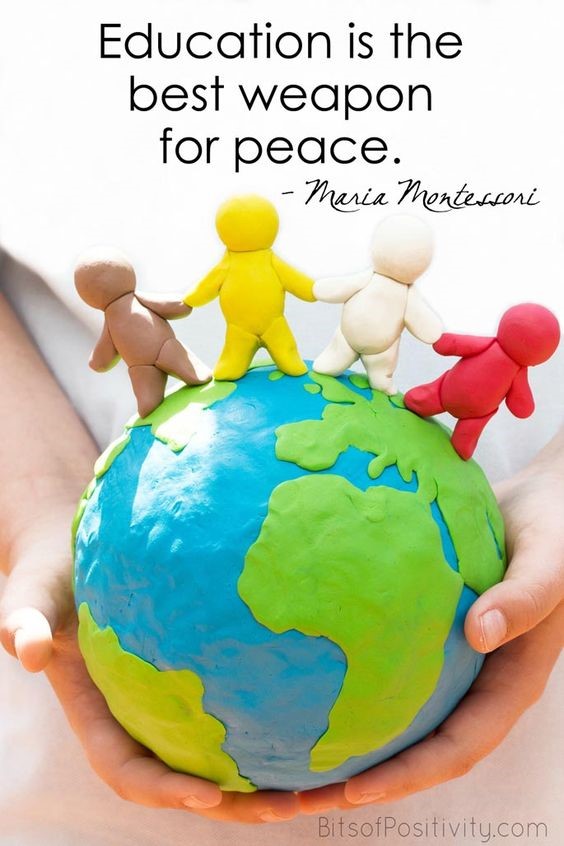 Teachers
Teachers
Montessori teachers are frequently referred to as directresses because it is a better summing up of what they do. They direct the child towards learning opportunities rather than teach. The staff in a Montessori preschool should be calm and unhurried and should move around the room discreetly and quietly. They should be responsive to the needs of individual children who should not have to wait until they become bored or upset before they get attention, but vigilance is maintained in a low-key way so the children do not feel as if they are being policed.
The teachers should never shout, never lose their tempers, never smack, shake or push a child or even speak crossly. They should be pleasant and polite, firm without anger and be able to deal with a misdemeanour with sympathy and assistance rather than with punishment. All children should be shown respect, never humiliated or laughed at, and their remarks should be listened to seriously and answered thoughtfully and courteously.



